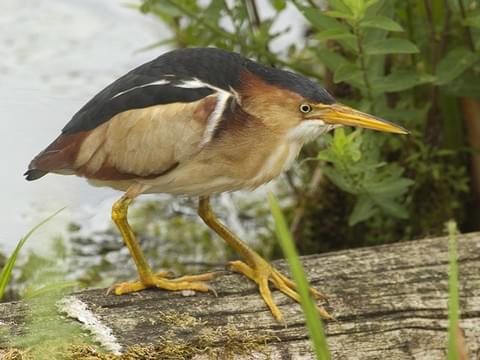
Common name:
least bittern (en); socoí-vermelho (pt); petit blongios (fr); avetorillo panamericano (es); Amerikanische zwergdommel (de)
Taxonomy:
Order Ciconiiformes
Family Ardeidae
Range:
This species is found from south-eastern Canada and the eastern, southern and south-western United States, through Central America and into the coasts and along the main rivers and wetlands of South America as far south as south-eastern Brazil and Paraguay. The populations in North America migrate south to winter in Central America.
Size:
These birds are 28-36 cm long and have a wingspan of 41-46 cm. They weigh 50-110 g.
Habitat:
The least bittern is found in a wide range of coastal and inland wetlands, including saltmarshes, mangroves, fresh water marshes and swamps, lakes with dense vegetation, rivers and artificial channels and ditches. They are present from sea level up to an altitude of 3.100 m.
Diet:
They mainly feed on small fishes, crustaceans and aquatic insects, but also amphibians, reptiles and terrestrial insects. They can also eat the eggs and chicks of other marsh-dwelling birds.
Breeding:
Least bitterns are loosely colonial. The male builds the nest, which consists of a frail platform of sticks and twigs, placed over water on dead stalks of emergent vegetation. There the female lays 2-5 bluish-white eggs with brown flecks, which are incubated by both parents for 19-20 days. The chicks are fed by both parents and fledge about 25 days after hatching. Each pair can raise 1-2 broods per season.
Conservation:
IUCN status – LC (Least Concern)
This species has a very large breeding range. There is no information regarding population size or global trends, but some populations are known to be in decline, due to habitat loss caused by drainage of wetlands and human disturbance during the nesting period. In North America the least bittern has had a stable trend over the last 4 decades.







